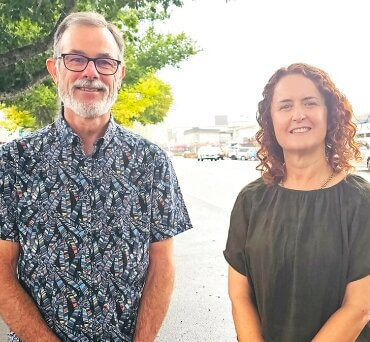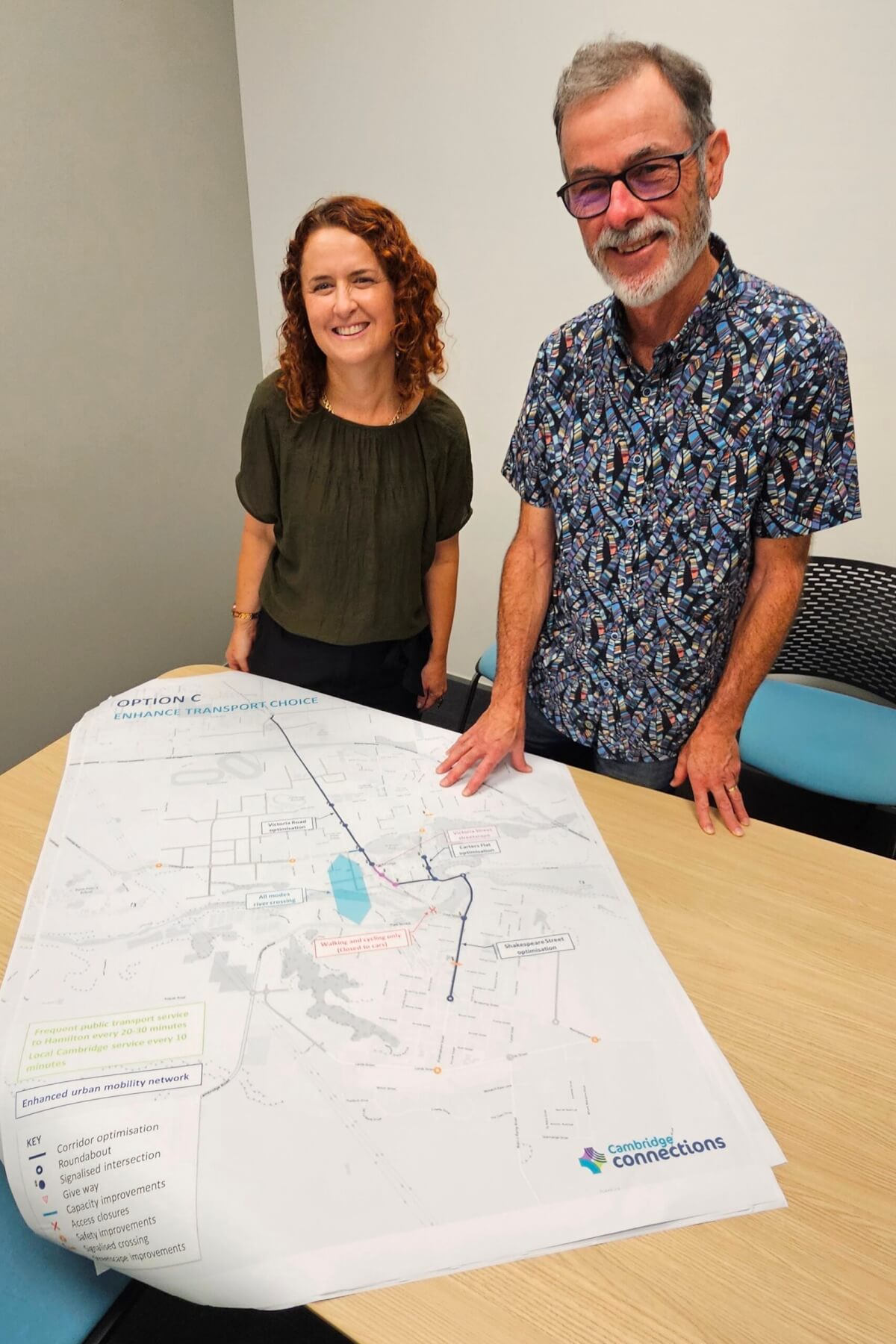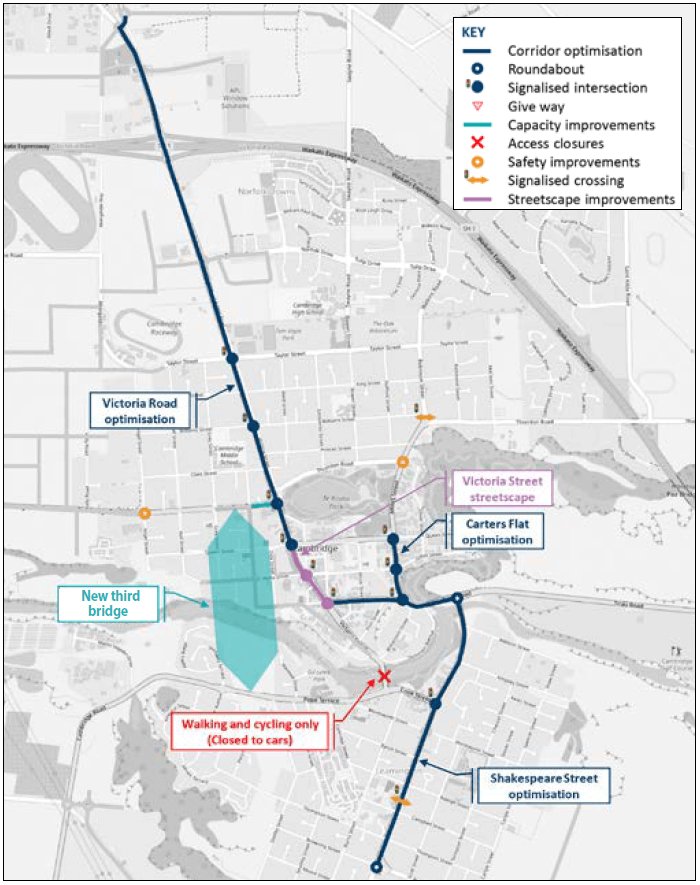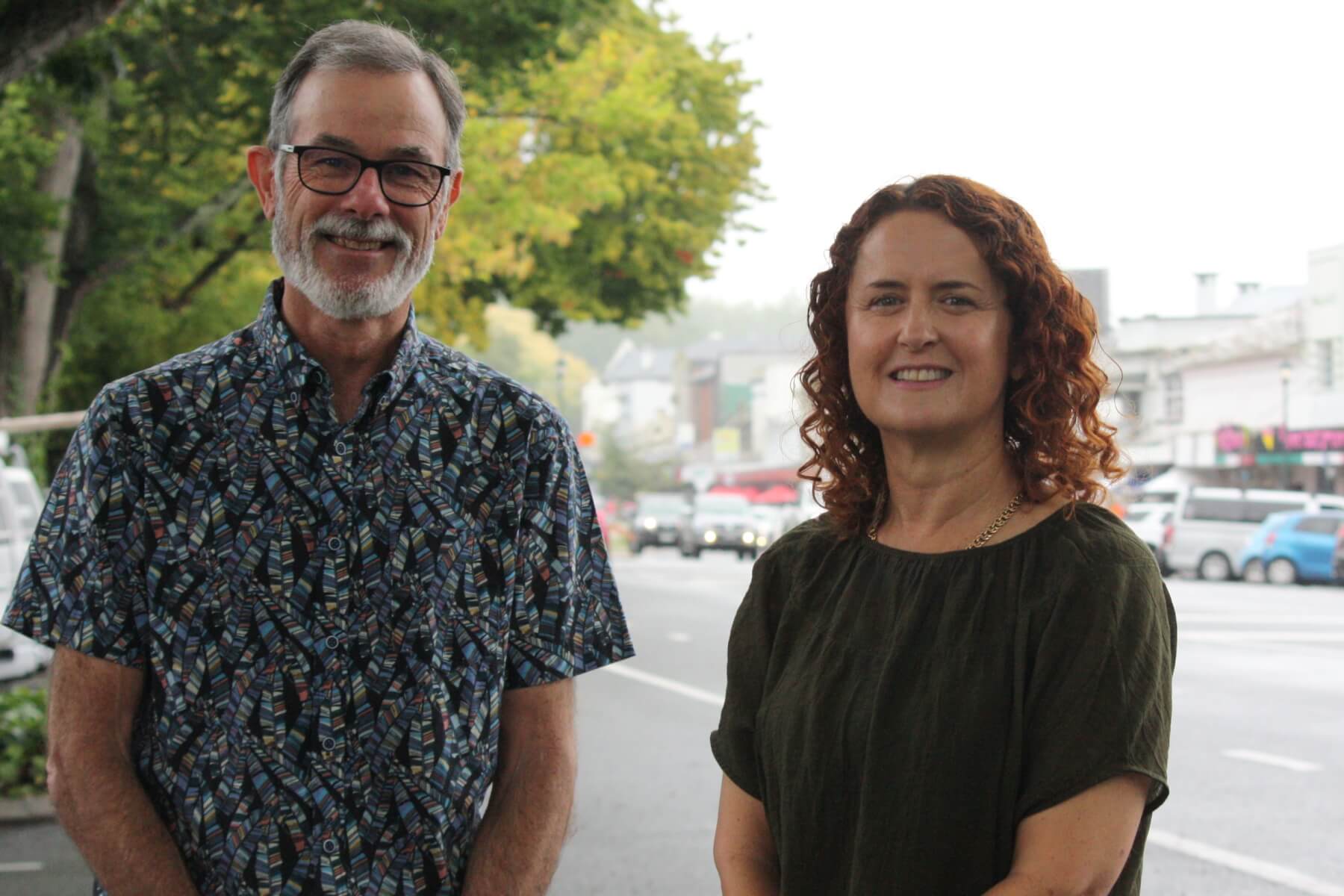
Cambridge Connections
A new bridge in town features in all three options unveiled by Waipā District Council today in its long-awaited multi-million dollar Cambridge Connections business case.
Of the three, the preferred option C out for consultation to stakeholders is an ambitious plan which restricts Victoria (High Level) Bridge to pedestrians, mobility scooters and cyclists.

Waipā transport experts Bryan Hudson and Rachel Algar will hit the road to consult with stakeholders over Cambridge Connections. Photo: Mary Anne Gill.
The option enhances the town centre, adds a 10-minute local bus service, optimises vehicle routes and introduces paid parking – but does not include additional Waikato Expressway on-off ramps at Tirau Road.
Transport manager Bryan Hudson and transportation planner Rachel Algar told The News this week Cambridge Connections would define the shape of the town’s transport infrastructure for the next 30 years.
The traditional solution to dealing with traffic congestion in the past would be to build more roads, make them bigger and provide more growth space, he said.
“We heard from people early on that the roads weren’t coping and they also said they needed a bridge that was out of town because there was a lot of thinking that was the logical place to put it.”
But when the project team analysed the data, it was clear the bulk of the people wanted to still cross the river in town because a lot of their business was there – dropping children off to school, supermarket shopping, dining and entertainment as examples.

The corridor proposed for the new bridge is marked in light blue. Graphic provided by Waipa District Council. Click on the image or here to download the Cambridge Connections powerpoint presentation.
If a third bridge was built out from Aotearoa Park across Waikato River to near St Peter’s School and the High Level Bridge closed to all but cycles and pedestrians, that would put added pressure on Fergusson (Low Level) Bridge requiring a clip on solution or another new bridge.
The project team identified a site for a third bridge closer to town over the river from the Town Belt between Marlowe Drive and Ihimaera Tce across to an area south of Alpha Street and west of Haworth Ave.
“Cambridge is growing, we actually need a plan for transport as a whole. It’s not just about a bridge, it’s about main routes like Victoria Street, Hamilton Road, (Carters Flat) and Shakespeare Street which will all need some transformation over time,” said Hudson.
Option C provided for broader walking and cycling improvement plans across the town and would keep commuter traffic out of the CBD.
There would be more frequent bus services to Hamilton, an around town commuter option and buses to and from Te Awamutu. People who needed to avoid the CBD – to commute to Hamilton for example – could use the new bridge.
That would allow some streetscape refinements in the CBD – possibly even closing parts of it to pedestrians only – while increased parking management and shorter time limits were also an option.
“In terms of what it could deliver Cambridge in the way it looks and feels and the living space people value, it’s (Option C) got more potential,” said Hudson.
The options are being presented to stakeholder groups from today. Staff will take feedback and prepare a business case for the council to endorse in June. The business case relies on New Zealand Transport Agency and ratepayer funding across the whole district.

Waipā transport experts Bryan Hudson and Rachel Algar will hit the road to consult with stakeholders over Cambridge Connections. Photo: Mary Anne Gill.








